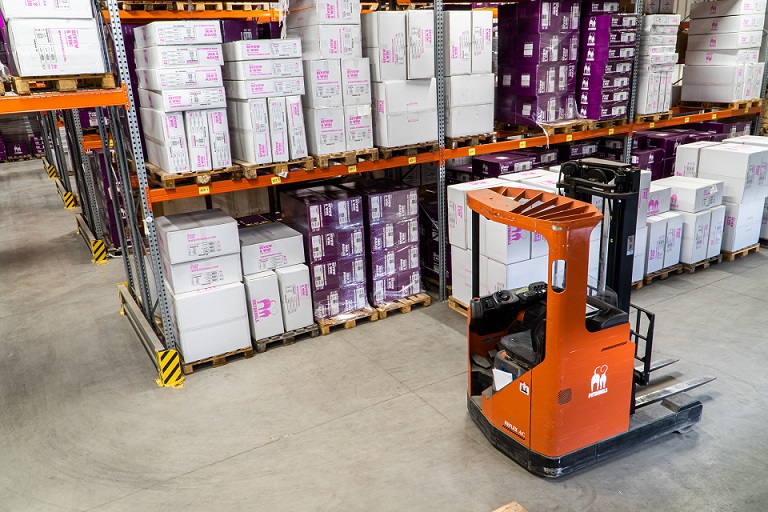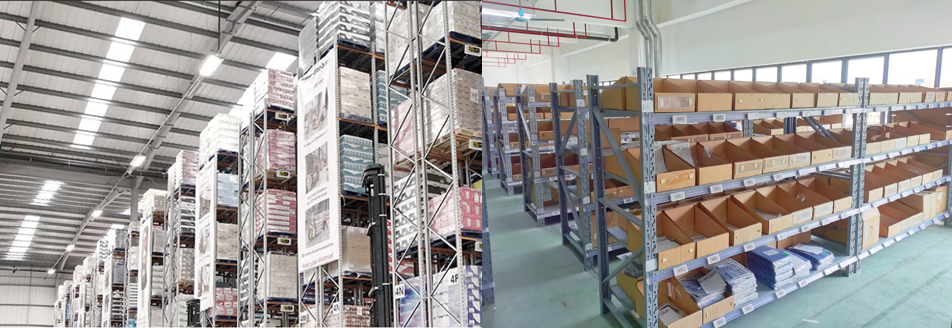Automation in the warehouse and stores has benefited the business in many ways. The President of The Tom Davenport Group, Tom Davenport, wrote a column that mentions that 7 improvements can be made when implementing automation. The benefits of automation are many times overlooked by companies.
Inventory is a significant concern when it comes to running a business. How much will be produced, sold, and to what extent should the stocks be maintained? Small-Enterprise owners and decision-makers still have no definite answer to those critical questions. Experts in many industries predict that inventory increases with logistics and warehousing management development.
Automating inventory has become a significant trend in business and has given companies the power to be more productive and effective.

Manual vs. Automated Inventory System
Inventory management is the process of managing and controlling the stock inventory of a company. The process primarily involves two things: 1) knowing what your current inventory is and 2) knowing how much inventory you need to order and reorder. There are two methods of inventory management: manual and automated.
Manual Inventory Management
The manual inventory management method is a somewhat archaic system that has been around for many years. It involves keeping track of all the items in your warehouse (or factory or retail store) by hand. You add new items to the list when they arrive, remove items from the list when they sell, and update any changes to the list when something happens. This is done through a paper-based system with documents that have to be printed out, passed around, corrected by hand, etc.
The advantage of manual systems is that they are relatively inexpensive to implement: All you need is paper and pencils (or computers). A spreadsheet can be created in Microsoft Excel or Google Sheets for free. The downside is that these systems require a lot of human effort to maintain, making them expensive over time in terms of salaries. It's also easy for errors to creep in with manual systems: Writing down information or entering it into a spreadsheet could result in typos and other mistakes like printing wrong price labels.
Automated Inventory Management
In recent years, technology has improved our ability to manage inventory automatically through computer software and specific hardware. This software can be programmed to update your list when certain events occur (like receiving new goods or removing items that sell). The program can also determine how many goods should be ordered at any given time and can even reorder goods automatically once a certain threshold has been reached.

6 Benefits of Automated Inventory System
Managing on-hand inventory, tracking stock levels, and monitoring replenishment cycles requires a significant investment in time and resources for small business owners. Manual inventory management is often inefficient and error-prone, resulting in inaccurate stock counts, overstocking, or even out-of-stock items. Automated inventory management systems provide an effective solution to these challenges.
The benefits of an automated inventory system include:
1. Saves time
A significant benefit of automated software systems is the amount of time they save. The software automatically updates as sales are made, eliminating the need for manual data entry. This frees up valuable staff time that can be redirected to other critical activities.
2. Reduces errors
Automated systems also reduce the likelihood of errors. Handwritten records are frequently illegible or inaccurate, mainly when multiple sellers use the same log. Human error can also affect data input into manual systems, causing discrepancies between physical and digital records. Automation provides consistency by reducing human intervention in recordkeeping processes.
3. Saves money
Because the system is so accurate and efficient, errors are reduced. You don't have to spend money fixing mistakes or reordering mismanaged items. In addition, you don't have to pay staff to perform manual counts or data entry tasks.
4. Updates real-time
Automated inventory management systems also update in real-time, giving business owners more visibility into their operations. The system provides up-to-the-minute information about material availability and allows business owners to track purchases and sales at a button.
5. Increase profits
A modern automated inventory system can also increase profits by reducing theft and waste. These systems integrate physical security systems to prevent security breaches and employee theft. The careful monitoring of inventory can also help management identify sources of waste in the production process.
For example, if a high degree of finished goods is lost during the packaging process, management may need to take steps to improve the efficiency of this stage in the production process.
6. Increase customer experience
Automated inventory systems also allow for faster check-in and checkout of products. This reduces customer wait times, leading to higher levels of customer satisfaction. A computerized inventory system can help streamline these processes and reduce many common errors, such as accidentally getting the price and description of the product wrong by the customer.

How Automated System Works
To use automated inventory control, a company must first develop a database to store the locations and quantities of its inventory items. The database will contain information about each item, such as the part number, description, quantity on hand, the amount needed or reorder point, and location within the facility. All data storage is assisted by base stations, software, and a few templates. Then E-ink electronic shelf labels are used to display the relevant information on the aisle.
When a new shipment of an item arrives at the facility, the person unloading it scans its bar code into the computer system, which updates its location in the database. When an employee uses an item from inventory, they scan it into a computer terminal which removes it from the list and updates the database. The system will notify you when an item reaches its reorder point, so you know when to order more before running out.
Smart Shelf Labels
The smart shelf label is a method of displaying the price of goods using E-ink displays. The electronic shelf label replaces the traditional paper price tag. It can show the price and inventory and display other information such as discount promotions and commodity information.
MinewTag has the latest ESLs that manage inventory and is equipped with the latest technology and updates every 2 seconds to keep your inventory well-managed.











